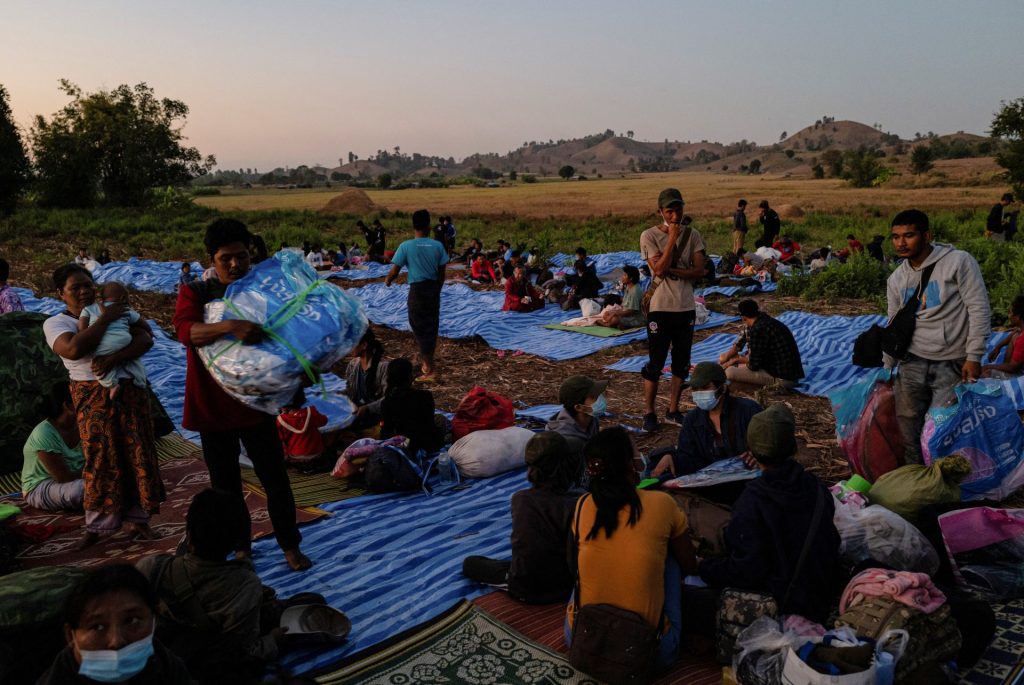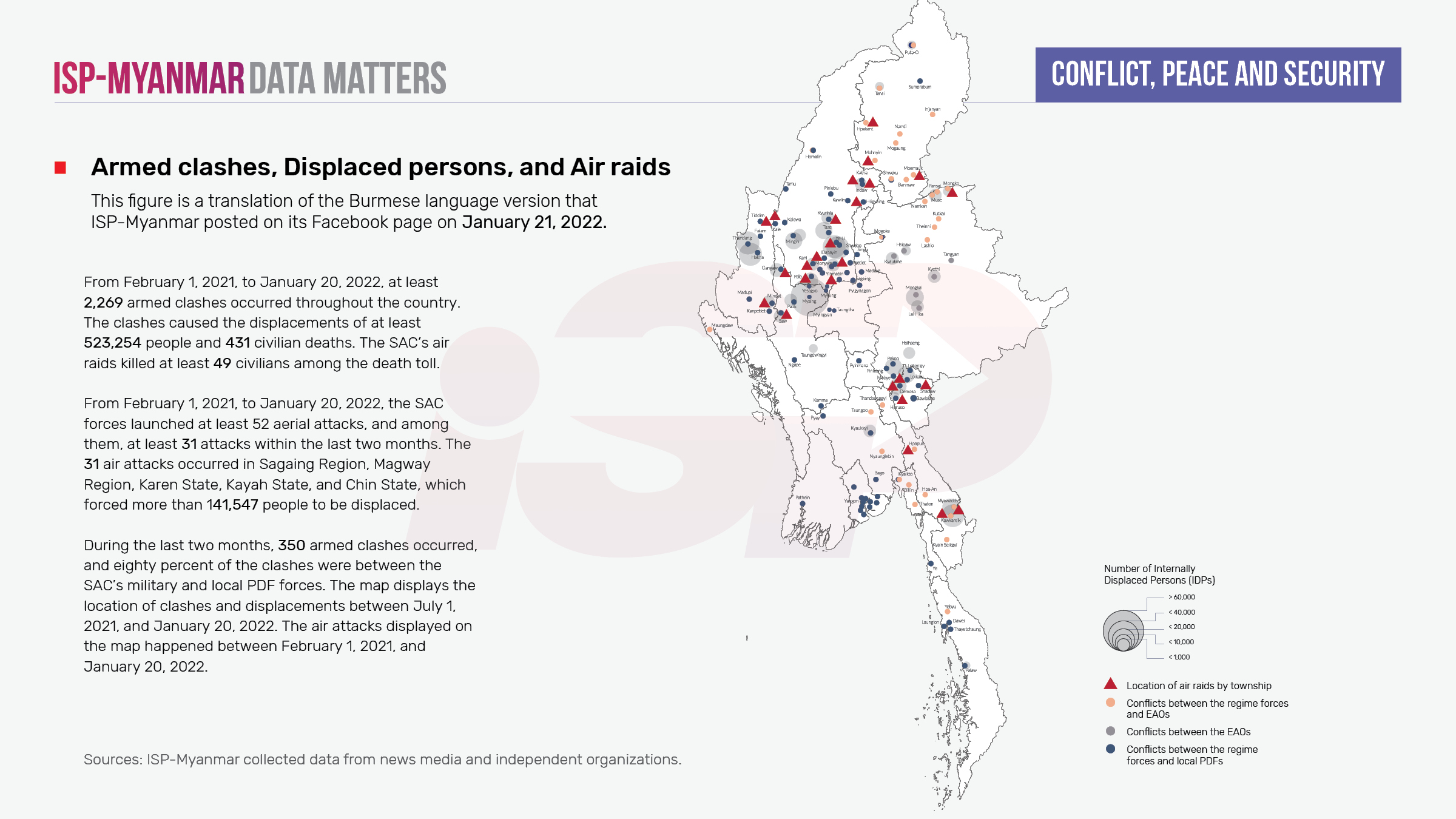
OnPoint No. 6
(This article is a translation of the Burmese language version that ISP-Myanmar posted on its Facebook page on January 21, 2022.)
∎ Event
Three parties, namely the Karen National Union (KNU), the Chin National Front (CNF), and the Karenni National Progressive Party (KNPP), issued a statement on January 20, 2022, supporting the concept of “Humanitarian Plus” proposed by the U.N. Special Envoy on Myanmar and added three more conditions. Meanwhile, meetings focusing on the humanitarian situation in Myanmar continue between Cambodia, the U.N. Special Envoy, and other ASEAN leaders.
∎ Preliminary analysis
As air attacks have intensified against civilians in Myanmar, civilian protection and humanitarian assistance for the affected population have become paramount. The “Humanitarian Plus” approach is meant to go beyond humanitarian aid, but the scope of “plus” (that is, what other areas it will cover beyond humanitarian aid) is still unclear.
The term raises the question of whether it is meant to link humanitarian assistance to solutions to the ongoing political crisis. The ASEAN special envoys have called for all parties in the conflict to practice restraint and they have also called for a humanitarian ceasefire. This relates to the second point of the ASEAN five-point consensus: “constructive dialogue among all parties concerned shall commence to seek a peaceful solution in the interests of the people.”
The first joint statement by three Ethnic Armed Organizations (EAOs) on January 20, 2022 issued 3 additional demands:
(a) the declaration of “a military no-fly-zone” that is internationally enforced;
(b) the declaration and establishment safe zones that internationally guarantee the protection of civilians in specific areas;
(c) the declaration of a series of “internationally negotiated humanitarian corridors” that would provide unimpeded access across borders or from key points within the country for humanitarian agencies to provide support to those most in need.
The joint EAO statement did not call for a ceasefire, nor did it mention the role of the opposition National Unity Government (NUG) and its local People’s Defense Forces. But the statement ended by saying that they “hope the urgent needs of the Myanmar people serve as a means to create a constructive dialogue between ASEAN and the international community that includes all Myanmar stakeholders.”
Nevertheless, the State Administrative Council (SAC) differentiates its dealings with EAOs from the emerging local People’s Defence Force (PDF) and claims it has extended its ceasefire with ethnic armed groups. The junta said it would tackle humanitarian assistance in coordination with ASEAN. On the other hand, the junta has used a variety of methods, including airstrikes, to target and annihilate newly emerging PDF forces in Chin State, Sagaing Region, Magway Region, Kayah State, and areas where EAOs are present.
In summary, in order to be able to provide humanitarian assistance there are three important factors to consider:
(1) Whether it would really be possible, without a ceasefire between the SAC and conflicting parties, to provide humanitarian assistance through “international enforcement”, “internationally guaranteed safe zones”, and “internationally negotiated humanitarian corridors” as the joint EAO statement mentioned;
(2) If there were a ceasefire to allow for humanitarian assistance, who would be the key players providing humanitarian assistance in the concerned areas—the SAC, EAOs, or the NUG and local PDF forces; and
(3) How and with whom to create a link between humanitarian assistance and conflict de-escalation to find a resolution for the political crisis.

∎ Scenario forecast
The most devastating man-made tragedies—human deaths, damaged towns and cities, and an increasing number of refugees—are unfolding particularly in Chin State, Kayah State (Karenni areas), Karen State, and Sagaing Region as an outcome of fighting between the SAC’s military and the joined forces of local EAOs and newly formed local PDF forces, rather than traditional fighting between the SAC’s military and EAOs.
Humanitarian assistance will continue to be difficult as long as the role of the National Unity Government (NUG) and the local People’s Defense Forces, which play a key role in the current situation, is not fully articulated by the EAOs and the international community. Conflict de-escalation and finding a sustainable political solution will also be difficult to achieve if these players are ignored.
As for the junta, it will likely continue its strategy of separating EAOs from PDFs, and the “War of Attrition” against PDFs will continue this dry season. Moreover, the SAC can deal separately with EAOs and international entities (especially ASEAN), providing some concessions to selective parties but not being forced to make any serious changes. In this case, war and humanitarian crises will continue to cause more suffering for the people of Myanmar.

